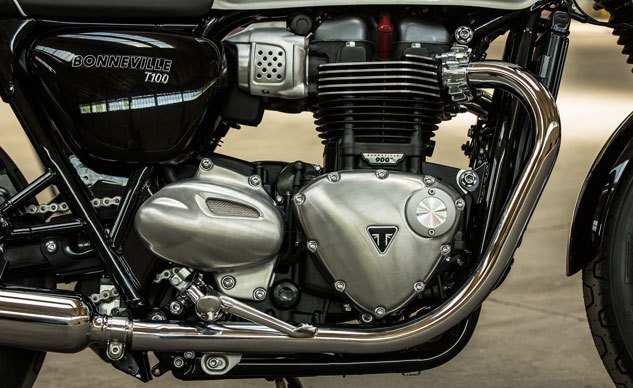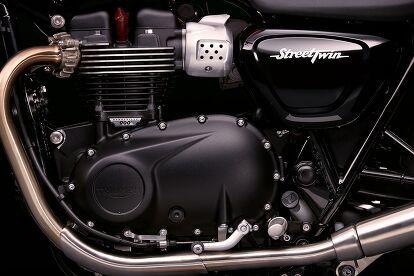Ask MO Anything: Why A 270-Degree Crank In A Bonneville?
Why Triumph didn't use its traditional 360-degree config in its new powerplant
This is an unusual Ask MO Anything, as this question was delivered not by a reader but by me. During the presentation for the T100 Bonneville I rode last week, I asked why Triumph chose a 270-degree crank for its new Bonneville parallel-Twins rather than the 360-degree orientation of Triumph’s originals. Miles Perkins, Triumph’s Head Of Brand, attempted to give me a satisfactory answer but admitted I’d be better served by a response from one of Triumph’s powertrain specialists.
2017 Triumph Bonneville T100 First Ride Review
A couple days later, my inbox was blessed with an email from Triumph Motorcycles America’s Public Relations Manager, Phil Read Jr. (Yes, the son of 7-time Grand Prix motorcycle champion!). Read had passed along my question to Triumph’s Chief Engineer, Stuart Wood, and here’s what he had to say.
There are two crankshaft configurations that we considered for the new Bonnevilles: 270-degree and 360-degree. We have produced both in the past and we have detailed, first-hand experience of their characteristics as perceived by a rider.
The 360-degree crank gives even firing intervals and the 270-degree crank a characterful, syncopated exhaust sound. Both have their merits from a sound-character perspective.
We chose the 270-degree configuration to improve the refinement of the new engines. At 1200cc, these are the largest capacity Bonnevilles that have been made. The 360-degree and 270-degree crank configurations produce reciprocating out of balance forces as the pistons travel up and down the bores. The motion of a piston up and down a bore can be described mathematically. The most significant parts of this motion can be described as primary and secondary that is once per revolution and twice per revolution.
These forces can produce vibrations if they are not balanced. We incorporate a pair of primary balance shafts that balance the primary vertical forces and also the fore and aft primary forces and pitching couple that can be left if no balance shaft or only one balance shaft is used. The next stage is to balance the secondary reciprocating forces. With a 360-degree crank, the secondary forces produced by each piston add together to double their force. With a 270-degree crank they cancel one another out.
Firing pulses and exhaust sound are characterful. There is nothing characterful about secondary vibrations. They are high frequency and generally an irritation to a rider. With a large-capacity engine, these vibrations would tend to be greater than with a small-capacity engine. We believe that using a 270-degree crank configuration for the new Bonnevilles gives a characterful but refined engine that will be appreciated by riders.
More by Kevin Duke

































Comments
Join the conversation
I'll just leave this here, for those who have trouble visualizing the firing orders. https://upload.wikimedia.or... Funny enough, I thought Triumphs ran the 360deg cycle! Shows what I know, huh?
I don't mean to totally derail this conversation, but you guys know a lot more than I do about this stuff and I'd like to learn. So...I ride a Honda Hawk-GT 650, V-Twin. Why does my bike have much more engine braking than the various types of Triumph parallels you are speaking of? Frankly, on the curvy mountain roads I ride on, I prefer it. Thanks!